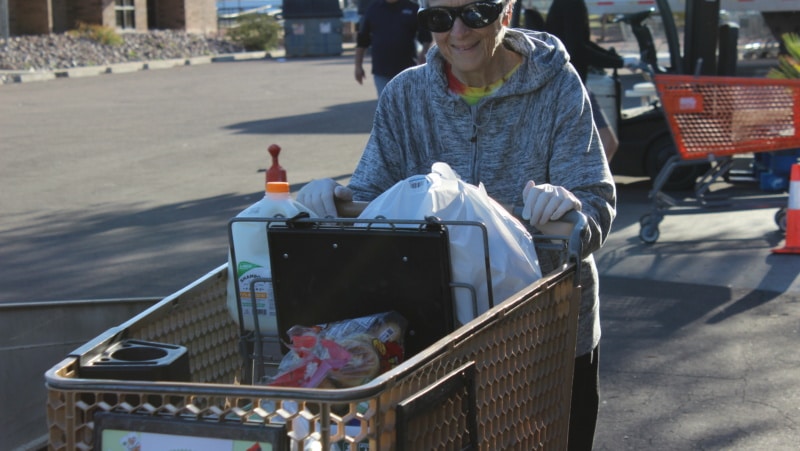New ‘Map the Meal Gap’ data shows almost 1 in 5 Arizonans (19.0%), or 1.2 million people, were food insecure in 2010, meaning that they did not always know where their next meal would come from. This is a 9.2% increase over data from 2009, which estimated 17.4% were suffering from food insecurity in Arizona. Nationwide, the food insecurity rate was 16.1% in 2010, or nearly 49 million people, which is virtually unchanged from 2009.
In early June, more data was released focusing on child food insecurity, and now users can toggle between maps focusing on overall or child food insecurity. AAFB’s director of communications Brian Simpson was recently interviewed by ABC 15 about this data and what it means for children struggling with hunger in Arizona this summer:
“This new Map the Meal Gap data shows more people continue to struggle to feed their families in Arizona,” said Ginny Hildebrand, AAFB president and CEO. “Unfortunately, we know children are disproportionally affected by food insecurity. Along with food banks throughout Arizona, we will diligently continue our efforts to ensure children and their families have access to adequate amounts of nutritious food.”
The findings result from Feeding America’s “Map the Meal Gap” study, which provides estimates on the rate of food insecurity at the county and congressional district level for the entire nation. In Arizona, Apache and Yuma Counties (27.1%) tied for the highest rates of food insecurity, with Navajo County (23.9%) coming in third. By comparison, Maricopa County is 16.1% food insecure, Pima County is 16.4% food insecure, and Cochise County has the lowest food insecurity rate at 16.0%. By Congressional District, District 4 (24.1%), District 1 (21.6%) and District 7 (20.7%) have the highest food insecurity rates, while District 8 (16.4%) has the lowest rate of food insecurity.
Generally speaking, the Map the Meal Gap food insecurity data helps to paint a picture of how many households are struggling with hunger, and that they can be found in our urban and rural communities throughout Arizona’s fifteen counties. They are the households most impacted by the recession, un- and under-employment, home foreclosure and lingering economic uncertainty. In addition, many of these households may earn too much to qualify for SNAP (Food Stamp) benefits or other public assistance, yet struggle to afford enough food to put on the table each and every day.
Feeding America’s Map the Meal Gap is based on statistics collected by the U.S. Department of Agriculture, the U.S. Census Bureau, the U.S. Bureau of Labor Statistics and food price data and analysis provided by The Nielsen Company (NYSE: NLSN), a global information and measurement company providing insights into what consumers watch and buy.
More data, including interactive maps for Arizona and the entire country, can be found here and at www.feedingamerica.org/mapthegap.
